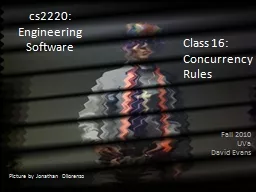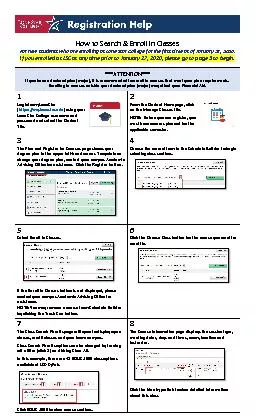PPT-Class 16:
Author : sherrill-nordquist | Published Date : 2016-05-22
Concurrency Rules Fall 2010 UVa David Evans cs2220 Engineering Software Picture by Jonathan Dilorenzo Menu PS4 Concurrency ObjectOriented Programming PS5 Designs
Presentation Embed Code
Download Presentation
Download Presentation The PPT/PDF document "Class 16:" is the property of its rightful owner. Permission is granted to download and print the materials on this website for personal, non-commercial use only, and to display it on your personal computer provided you do not modify the materials and that you retain all copyright notices contained in the materials. By downloading content from our website, you accept the terms of this agreement.
Class 16:: Transcript
Download Rules Of Document
"Class 16:"The content belongs to its owner. You may download and print it for personal use, without modification, and keep all copyright notices. By downloading, you agree to these terms.
Related Documents














